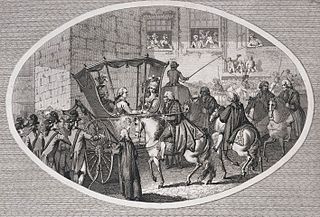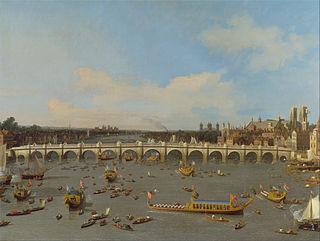Sir Gilbert Heathcote, 1st Baronet, was a British merchant and Whig politician who sat in the English and British House of Commons between 1701 and 1733. He was a Governor of the Bank of England and was Lord Mayor of London in 1711.
Sir William Withers of Fulham, Middlesex, was an English linen draper and Tory politician who sat in the English and British House of Commons between 1701 and 1715. He was Lord Mayor of London from 1707 to 1708.

Sir Thomas Abney was a merchant and banker who served as Lord Mayor of London for the year 1700 to 1701.
Sir John Williams was an English merchant and Tory politician who sat in the House of Commons from 1730 to 1734.
George Heathcote was an English merchant and philanthropist and Tory politician who sat in the House of Commons from 1727 to 1747. He was Lord Mayor of London in 1742.
Sir Robert Lee was an English merchant who was Lord Mayor of London in 1602.

Sir Samuel Garrard, fourth Baronet (1650–1724) of Lamer, Hertfordshire, was an English merchant and Tory politician who sat in the English and British House of Commons between 1701 and 1710. He was a city Alderman and was Lord Mayor of London from 1709 to 1710.

William Pickett was an English goldsmith and local politician, Lord Mayor of London in 1789.
Sir John Ward, of Hookfield, Clay Hill, Epsom, Surrey and St Laurence Pountney, London, was a British merchant, banker and politician who sat in the House of Commons between 1701 and 1726. He was an original Governor of the Bank of England and served as Lord Mayor of London in 1718.
Sir Thomas Rawlinson of Stowlangtoft, Suffolk, was Lord Mayor of London in 1753.
Edward Ironside was a British topographer.

Micajah Perry was a British tobacco merchant and politician who sat in the House of Commons from 1727 to 1741. He was Lord Mayor of London in 1738.
Sir Robert Bedingfield (1637–1711) of Ludgate Street, London, was a British merchant and politician who sat in the House of Commons in 1701. He was Lord Mayor of London in 1706.
Sir Robert Beachcroft (1650–1721) was a London cloth merchant who was Lord Mayor of London in 1711.
Sir William Lewen, of Ewell, Surrey, was a British merchant and Tory politician who sat in the House of Commons between 1708 and 1722. He was Lord Mayor of London in 1717.
Sir Samuel Stanier of Wanstead, Essex, was a London merchant who became Lord Mayor of London in 1713

William Benn was a British merchant, who was Lord Mayor of London in 1746.
Sir Richard Hopkins of St. Botolph's, Bishopsgate, London was a British merchant and politician who sat in the House of Commons from 1724 to 1727.
Sir Robert Willimot, of Banstead, Surrey, was a British politician who sat in the House of Commons from 1734 to 1741. He was Lord Mayor of London in 1742.

George Swan Nottage was a British politician, businessman, and photographer. In 1884 he was elected as Lord Mayor of London, and subsequently became the most recent person to die whilst holding the office.








